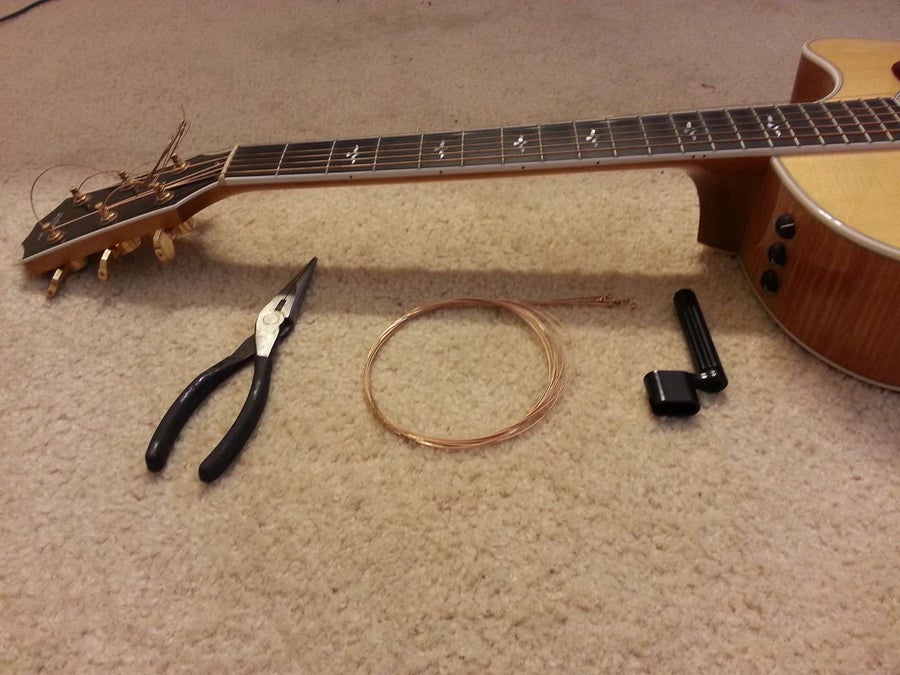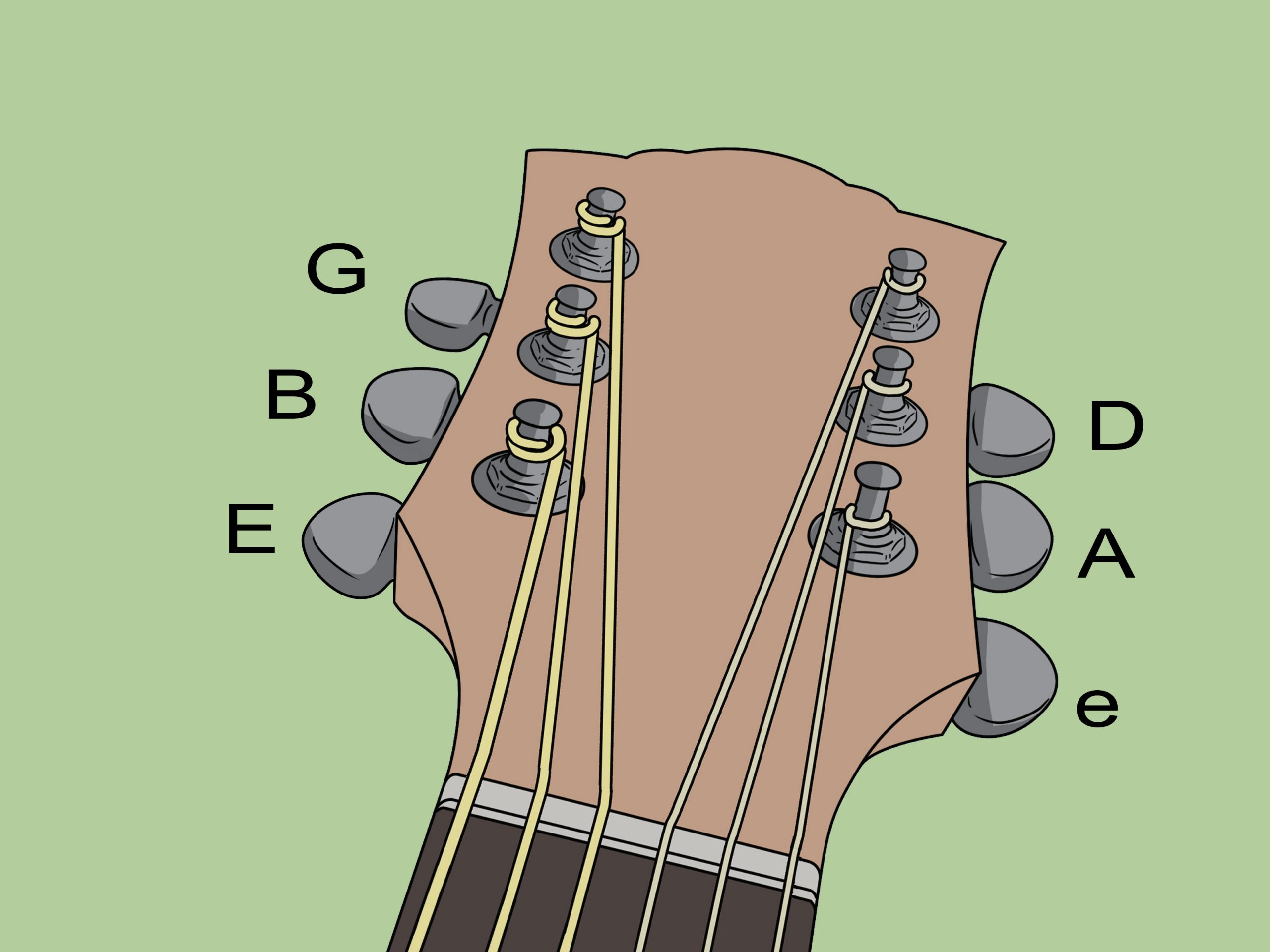Stringing a classical guitar before live concerts or for recording is an interesting job to do! The melancholic tone they produce, the way nylon strings feel whilst playing and I, personally, overall, find them to be much more aesthetically pleasing than other guitars.
Anyways, that is beside the point, I do not wish to start a “which guitar looks or sounds the best” argument here; it is entirely subjective.

how to string a classical guitar
The topic at hand is a simple but important one: how do you string a classical guitar? I faced this issue myself when I was a wee lad who bought a classical guitar on a whim (one of the best decisions of my life) and realized that adding strings to this guitar is a bit different than adding strings to my electric or classical guitar.
It is not as tough as it may seem with all the knot-tying shenanigans, but honestly it is not that tough once you know what you are doing and what you must do next. Today, I will provide you with a step-by-step guide to string your classical guitar. Okay, let us begin!
Required tools TO String an Classical guitar
How to Secure strings to the bridge of Classical guitar?
First of all, you need to clean the guitar strings before restring. After properly cleaned the guitar strings you can start with any string, but most people go with the Low E, and I would recommend that also because symmetry pleases me, and if you start with any other string than lower or upper E, you are on another level man. A classical guitar string has two ends, one of which will have a wider wrap and a different texture while the other will be floppy and flexible.
The end of the string, which has that flexibility and floppiness, will be tied to the bridge while the other end will go to the tuning post. The bridge is part of your classical guitar, which keeps the strings secured to the guitar's body. Securing the strings to the bridge is very easy. However, thicker strings, aka bass strings, namely E, A, and D, are wrapped differently from G, B, and E, the treble strings.

How to string the thick bois, the bass strings
Bass strings don’t require as many knots as thinner strings do in order to be tied up to the bridge securely. Follow the instructions below:
- Put the strings through the square part of the bridge where you will find 6 holes, this is called the ‘Tie Block’. After inserting the string through the correct hole, leave about 2-3 inches of free string.
- Now, with that 2-3 inches of string, you left free, create a loop. Not a beat, a knot. Pull the string above the bridge and then, wrap it underneath the rest of the string.
- Pull the string tightly, loop it underneath itself and take out the slack. Make sure that your knot is strong. Hold the end-of-the-string so it is unable to move (it should be below the tie block) and pull again tightly to make sure it is locked perfectly in its place.
How to string The thin bois, the treble strings
Essentially, the procedure is the same. The treble strings being thinner and more slippery require more wraps to have them be securely locked in their place. So, here, that not-losing-your-cool tool will come in handy.
- Insert the correct string through the correct hole in the tie block, as we did before Now, leave around 2 to 3 inches of free string for making a secure and tight loop.
- Take that 2-3 inches of free string and wrap it underneath the left of the string.
- Wrap the string over and under the string which is resting upon the bridge.
- Here is the difference. For a more secure wrap, you should repeat the knot. Wrap another time over and under the string which is lying across the bridge.
- Pull the strings and make sure that the knots are tight and secure. The ideal position for the tail is at the back of the bridge, not on top.
How to Tie up the strings at the tuner of classical guitar
The hard part as ended. Securing your strings to the tuners is fairly simple.
- Insert the string into the hole from underneath and then, pass it over and around the tuning post and thus creating a loop. Pull the free end of the string and run it through the loop and then pull.
- Do not take out all the slack, this is because, by the time you are done, you ideally want 4 to 5 wraps and leaving some slack to the string will provide you with those wraps.
- Repeat the same for all strings. Once it is securely tied to the tuning post, it is time to bring out the good old’ string winder or not if you prefer using your hands.
Though nylon strings stretch a lot so it might take some time but in that case, use the other tool, the not-losing-your-cool. The process of bringing the string up to pitch will add some more needed loops to it.
While tightening your strings up, watch that the loop you created at the tuning post is secure and is not undoing itself. Pull the “tail” just in case to make sure the knots are tight at both the tuning post and the bridge. After restringing, you need to tune the guitar to attain the perfect tone. Tuning a guitar without a chromatic tuner is not a simple job.
Conclusion
And you have successfully done it, my friend. Now you got an idea about how to string a classical guitar. Bring out wire cutters to get rid of excessive strings and complete the new, fresh look of your classical guitar. Note that nylon strings take a much longer time to stabilize than your steel strings.
So, you would have to tune your classical guitar multiple times in a day, about every couple of hours or so. Of course though, eventually, they will settle in and then you can enjoy playing classical guitar that you re-stringed (that’s not a word) or added strings to for the first time yourself. Happy playing!

Gibson is a blogger and reviewer, whose passion is helping people with all the aspects of music through the blog he provides. Also, he is an artist and loves to create his own tunes by purchasing good quality musical tools. With his own experience, he has provided a great list of tools for you in this blog. Seeking the best quality musical tools? Read this blog and end your music thirst!









